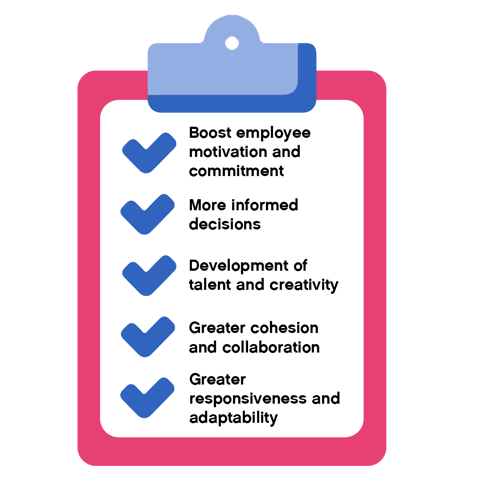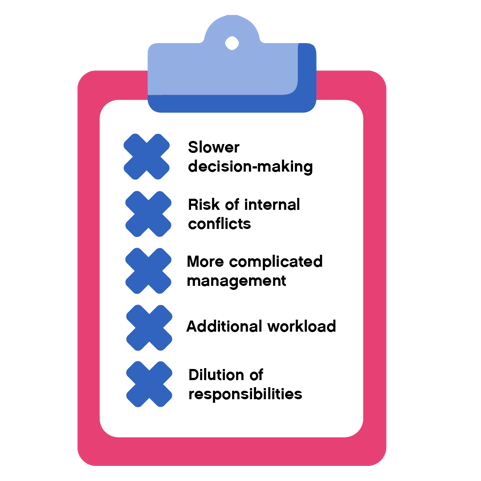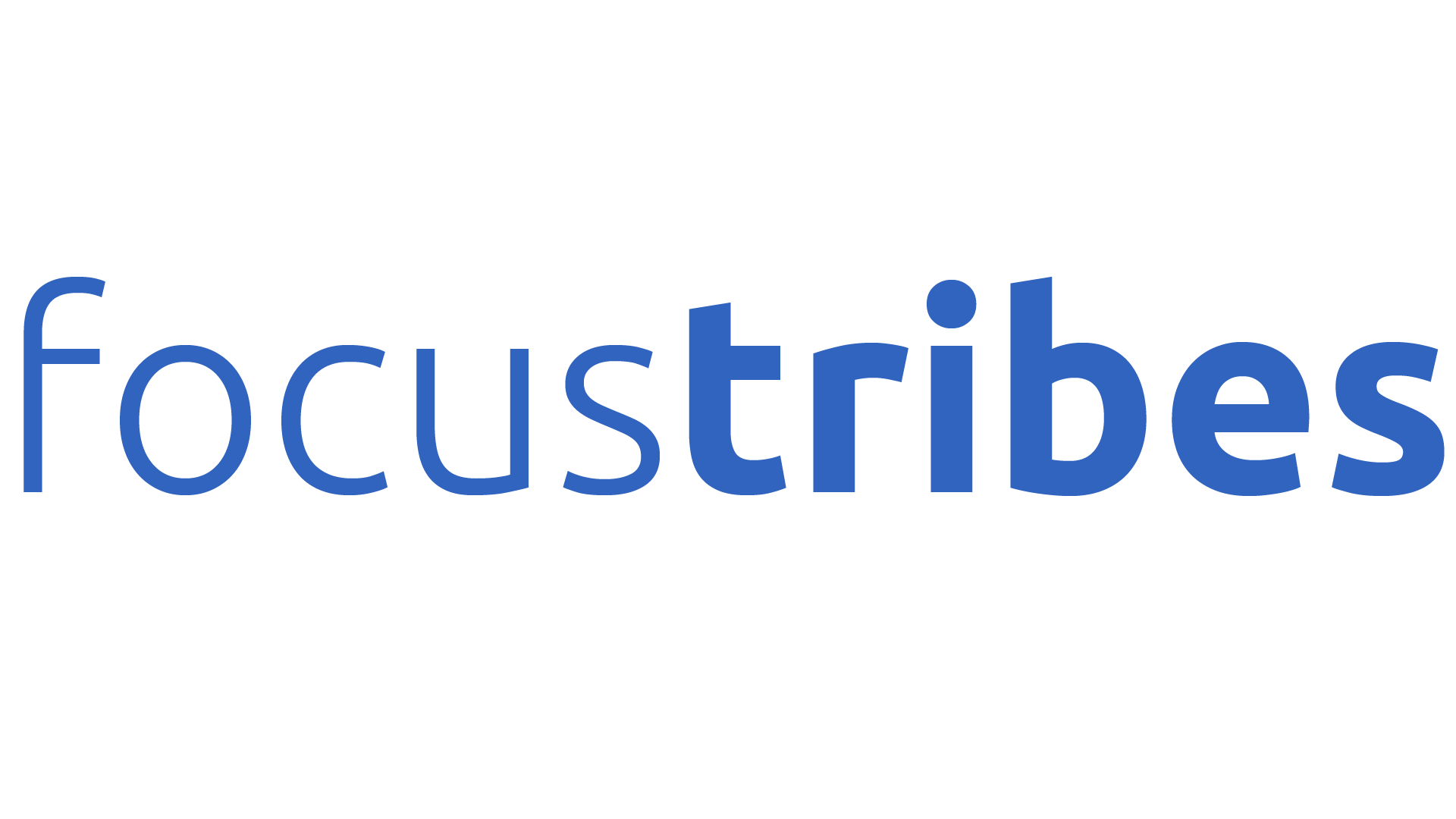Definition and principles
Participative management is a style of leadership in which decisions and processes are shared between managers and employees. It encourages collaboration and active participation in decision-making, problem-solving and strategy development. The aim is to value every contribution, harness collective intelligence and create an inclusive and motivating working environment.
The manager acts as a facilitator or coach, encouraging open exchange, listening to suggestions and seeking consensus before making important decisions.
5 advantages of participative management
Participative management is a management method that actively involves employees in company decisions and management. It is becoming increasingly popular, and for good reason! Here are the five main benefits of participative management:
1. Boost employee motivation and commitment
When employees know that their voice matters, their motivation and commitment soar. When they feel valued and respected, they want to get involved. The result? Greater productivity and job satisfaction.
2. More informed decisions
Involving employees in decision-making means benefiting from their diverse knowledge and perspectives. People on the ground often have valuable ideas. This diversity of viewpoints leads to better decisions and innovative solutions.
3. Development of talent and creativity
Participative management encourages initiative and new ideas. In an environment of trust, skills develop and creativity flourishes. Employees become drivers of innovation, driving the company towards continuous improvement and increased competitiveness.
4. Greater cohesion and collaboration
Involving employees in the decision-making process creates a climate of transparency and trust. Relationships are strengthened, collaboration between teams improves and communication becomes more fluid. Less conflict, more teamwork to achieve common goals.
5. Greater responsiveness and adaptability
In an ever-changing business environment, adaptability is essential. Participative management enables us to respond quickly to change. Employees who are close to the realities on the ground are quick to identify signals of change and propose effective adjustments. This responsiveness is an important asset if we are to remain competitive.

5 disadvantages of participative management
Although participative management has many advantages, it also presents significant challenges. It is important to be aware of these disadvantages so that you can better anticipate and overcome them. Let's look at the five main disadvantages of participative management:
1. Slower decision-making
Involving a large number of people in decisions can slow down the process. The more voices there are to be heard, the longer it takes to reach consensus. This can be problematic in environments where quick decisions are critical to remaining competitive.
2. Risk of internal conflicts
Participative management can sometimes lead to differences of opinion. If not properly managed, these differences can lead to internal conflict. When everyone expresses their ideas and concerns, tensions can arise that affect team cohesion and cooperation.
3. More complicated management
Managing a participative model requires advanced leadership and facilitation skills. Managers need to know how to guide discussions, manage disagreements and maintain a positive dynamic. This added complexity can be challenging, especially for less experienced managers.
4. Additional workload
Taking an active part in decision-making places an additional workload on employees in addition to their day-to-day tasks. This overload can lead to stress and fatigue, reducing efficiency and well-being at work.
5. Dilution of responsibilities
With more people involved in decision-making, it can become difficult to see clearly who is responsible for what. This dilution of responsibility can lead to a lack of individual accountability, with everyone relying on the group to take on the important tasks.

10 tips to apply participative management
Participative management can positively transform your business, but implementing it requires a considered and strategic approach. Here are 10 tips for effectively integrating participative management:
1. Encouraging open communication
Create an environment in which your employees feel free to share their ideas and concerns without fear of repercussions.
2. Training managers
Make sure your managers are familiar with facilitation techniques and the management of participative discussions.
3. Involving all levels
Involve the whole organisation in the decision-making process to benefit from a wealth of perspectives.
4. Create cross-functional working groups
Set up teams made up of members from different departments to work on specific projects, stimulating collaboration and innovation.
5. Use digital collaboration tools
Adopt platforms that make it easier to share ideas and manage projects collaboratively.
6. Define clear decision-making processes
Establish precise stages for the participative decision-making process to avoid confusion and ensure efficiency.
7. Aligning objectives
Ensure that individual and corporate objectives are in harmony, so that everyone is working towards a common goal.
8. Recognising and rewarding contributions
Value your employees' ideas and efforts with recognition and rewards, strengthening their commitment.
9. Assess and adjust
Put in place mechanisms to evaluate the effectiveness of participatory management and make any necessary adjustments.
10. Cultivate a climate of trust
Create an environment where employees' contributions are respected and taken into account, reinforcing mutual trust.
To remember :
Participative management is a way of creating a dynamic and collaborative working environment. Although it can be challenging, the benefits, such as increased motivation and improved productivity, make it a wise choice for organisations seeking to evolve in an ever-changing world. By applying the advice given here, you can maximise the benefits of this approach and stimulate innovation, commitment and collective success. By adopting this style of leadership, you are betting on long-term growth and collective success.
Karine LOUCHART - IT Project Manager at Blancheporte and member of the Focustribes community, shares her experience of a project to modernize Blancheporte's international information system. Definition of project management Project management involves planning, organizing,...

